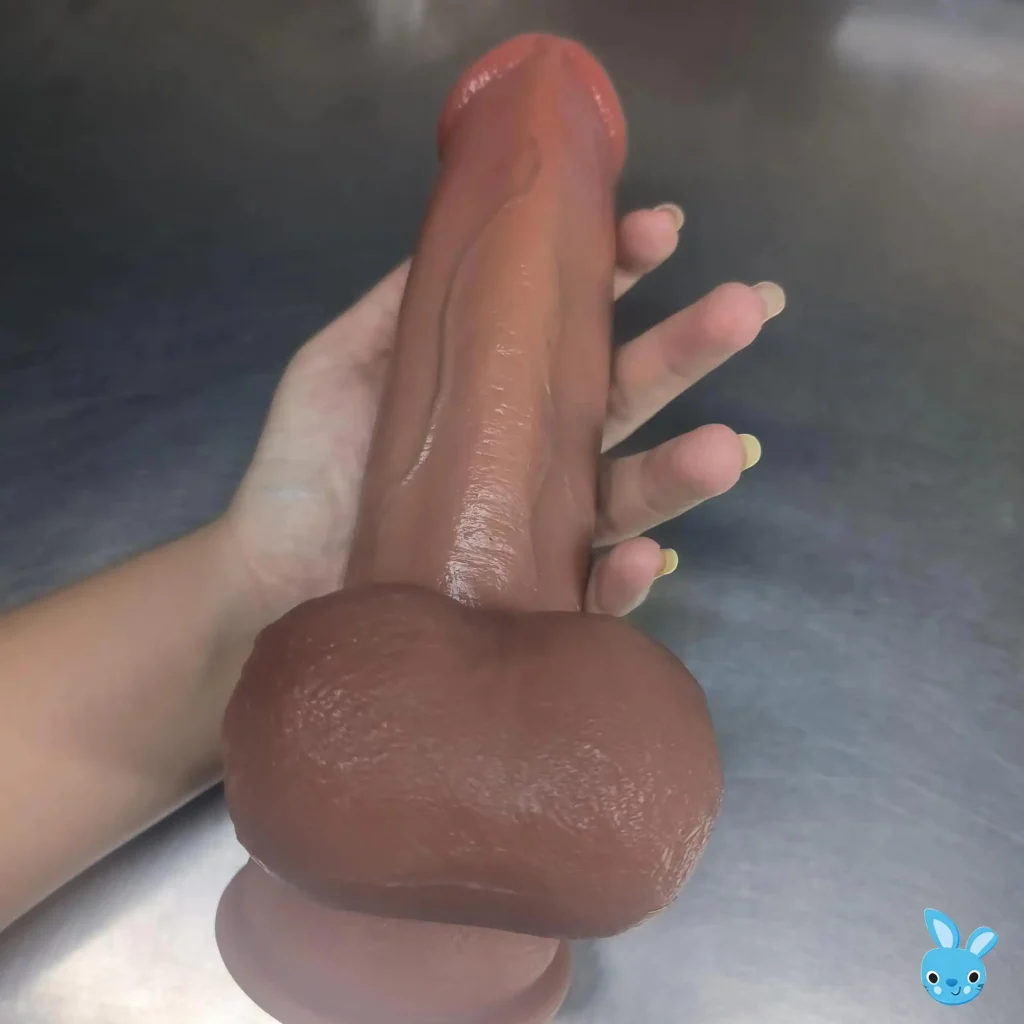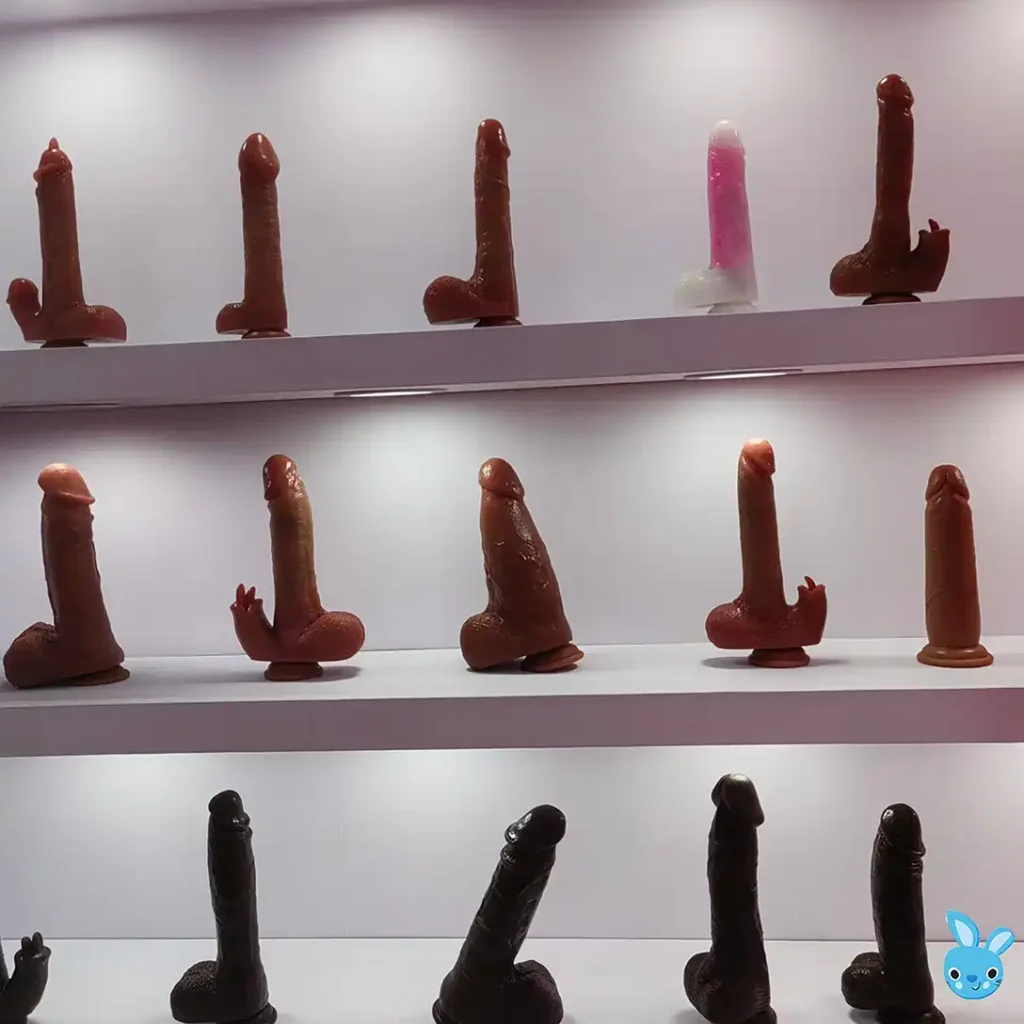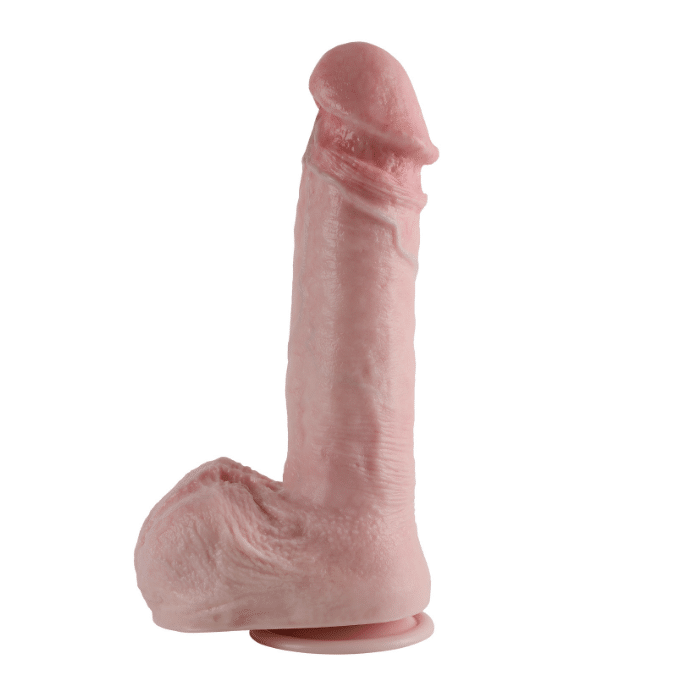Consumers love silicone dildo for their lifelike appearance, softness, and hypoallergenic safety. The realistic detailing of their surface texture is a key selling point, significantly enhancing their competitiveness. The more realistic the product, the more competitive it becomes.
Below, we will introduce the technical processes behind the surface texture treatment of silicone dildos in a Chinese factory, providing a detailed understanding of their product competitiveness.
1. Mold design and manufacturing for silicone dildo
The first step in achieving realistic surface textures for silicone dildos is creating a finely crafted mold. Using injection molding techniques, the silicone dildo takes shape after demolding. A high-quality mold lays the foundation for crafting a realistic silicone dildo, capturing details such as texture, veins, and ridges to ensure a lifelike appearance.
For an in-depth discussion of dildo molds and technical steps, refer to our blog: Comparison of Different Types of Dildo Molds.
2. Basic surface treatment
After demolding, the silicone dildo undergoes basic surface treatment. This step removes parting lines or residual silicone that may remain on the surface after molding. The surface is smoothed using flexible tools, and the dildo is inspected for cracks or defects.
Once the initial rough treatment is complete, fine sandpaper and other delicate tools are used to further smooth the surface by removing any unevenness. The aim is to create a polished finish. The product is inspected for air bubbles, flaws, or sanding marks.
Finally, the dildo is cleaned to remove any fine particles or residues from the sanding process, ensuring a pristine surface. A lint-free cloth is used to dry the product gently.

3. Spraying process
Spraying involves applying a special coating to the surface of the silicone dildo to mimic the texture of skin pores. The coating is applied evenly across the surface using spray machines, automatic sprayers, or manual spray guns. This treatment enhances the realistic feel of the silicone dildo, improving its softness and anti-slip properties.

4. Coloring process
The coloring process gives the silicone dildo its lifelike appearance by enhancing its visual texture and realism. Unlike spraying, which provides uniform coloring, the coloring process focuses on localized details. Human skin tones vary across different areas, even on the same hand. To achieve this realism, each part of the dildo is meticulously colored.
Fine brushes or spray equipment are typically used to apply color, with the choice of tool depending on the area being treated. For instance, simulating the tiny, intricate capillaries under the skin requires very fine brushes. When coloring skin textures, the direction of the texture guides the application, adding depth and a layered effect that emphasizes the realism of the surface details.

5. Surface coating
After sanding, spraying, and coloring, the silicone dildo already boasts a remarkably realistic appearance. However, to enhance durability, a final step involves applying a nano-coating treatment.
A nano-coating is an ultra-thin layer (ranging from a few nanometers to a few micrometers) applied to the surface of the silicone dildo. The evenly distributed molecules of the nano-material create a dense protective barrier. This coating protects against external factors such as water, oil, dirt, fingerprints, and stickiness, improving the dildo’s durability and overall user experience.
Conclusion
The above surface treatment techniques significantly enhance the realism of silicone dildos, increasing their market competitiveness and appeal to consumers. These methods form the foundation for their high popularity.
Blue Rabbit offers exceptionally realistic dildos in a variety of styles. Additionally, we supply other types of dildos, such as double-layer dildos, glass dildos, vibrating dildos, and strap-on dildos. With our excellent after-sales service, you can wholesale dildos with confidence, free from concerns about quality. Explore our dildos and other sex toys today!

